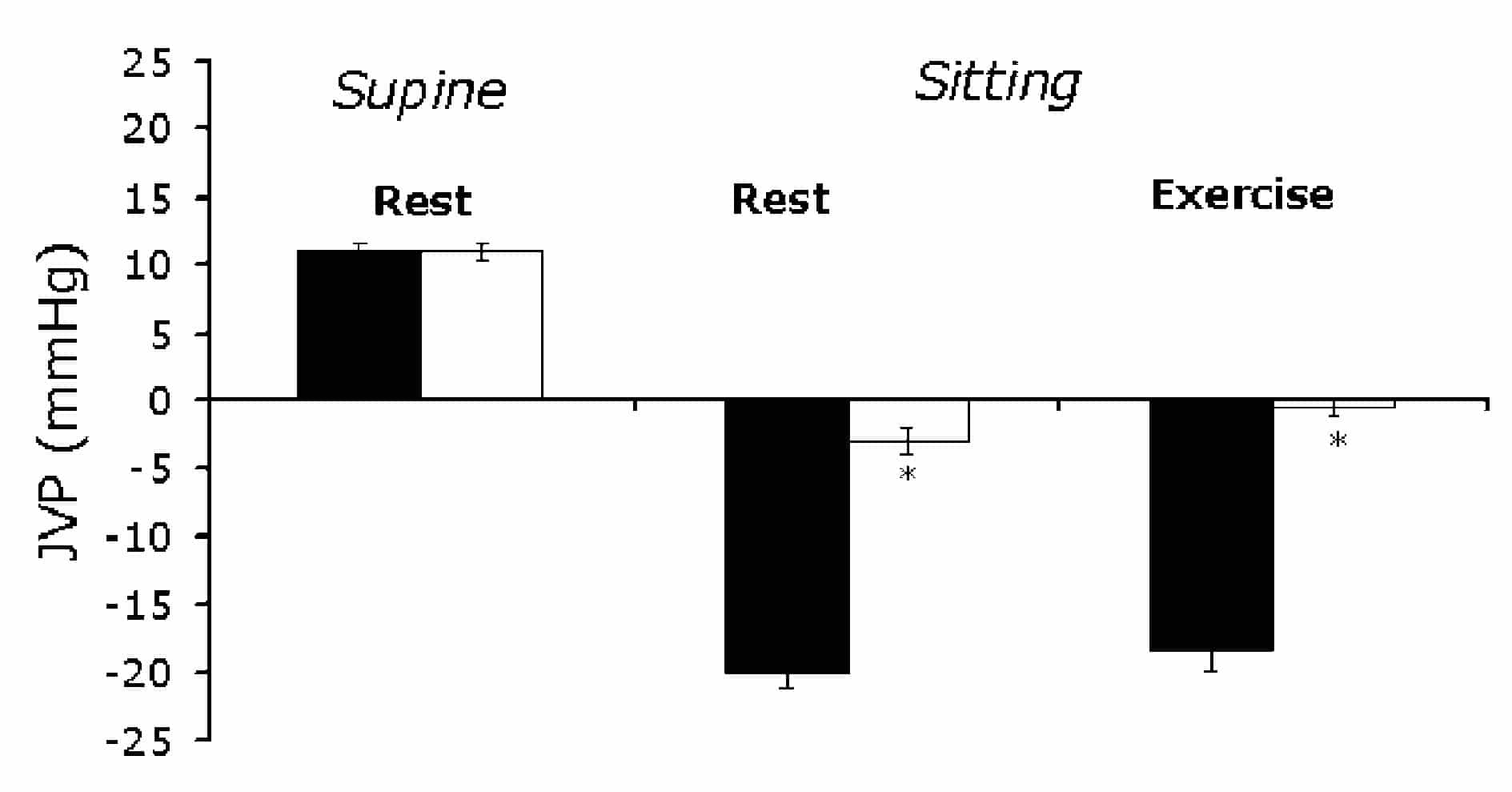When upright cerebral blood flow may be supported by a siphon, i.e. that the hydrostatic challenge of raising arterial blood from heart-level to the brain is balanced by the equal gravitational force accelerating the venous outflow from the brain. On the other hand, if the delicate veins collapse when they leave the skull and enter the neck as indicated by an ultrasound evaluation of the internal jugular vein (Cirovic et al. 2003), then the siphon may work only for that part of the circulation to the brain that is encompassed within the skull. Outside the brain the venous outflow pressure may approach zero and the value dependent only on how rigid the neck facia is. Given the siphon effect on cerebral blood flow, it is of no consequence whether mean arterial pressure (MAP) varies with the distance from the heart to the level of the brain. In contrast, MAP of a giraffe is elevated according to the length of its neck (Hargens et al. 1986) as would be expected in order to preserve perfusion pressure to the brain under the premises that a siphon does not contribute significantly to its flow.
Five male subjects (mean ± S.D.; age: 22.8 ± 22 years) participated in this study which was approved by the Ethics Committee of Copenhagen (KF 01-369/97). A retrograde catheter determined jugular venous pressure (JVP) at the level of the venous bulb while mean arterial pressure (MAP) and central venous pressure (CVP) were monitored. Measurements were taken when subjects were supine and sitting up. The determination was continued during submaximal exercise (heart rate of 130 beats min-1), which might influence central venous pressure especially during semi-supine cycling. A repeated measureas one-way ANOVA was used to check difference in variables with the Tukey post hoc test employed when main effects were statistically significant at P < 0.01.
When supine MAP was 94.3 ± 1.7 mmHg (mean ± S.D.), CVP 7.0 ± 0.5 and JVP 11.1 ± 0.6 mmHg. When sitting MAP increased to 95.3 ± 2.0 mmHg, while CVP and JVP decreased to 0.8 ± 1.4 and -3.0 ± 1.0 mmHg, respectively (P < 0.01). During exercise MAP was 93.9 ± 1.9, CVP 0.5 ± 1.3 and JVP -3.26 ± 1.0 mmHg (values different from those when supine, P < 0.01, but not from those when upright at rest).
These results indicate that in upright humans, both at rest and during exercise, jugular venous pressure is zero and negates a siphon effect on the outflow from the brain.

